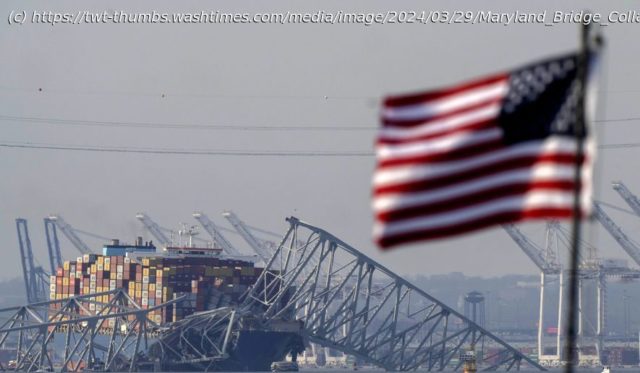With the 95,000-ton cargo ship Dali powerless and hurtling helplessly toward the Francis Scott Key Bridge, the harbor pilot commanding the vessel had just minutes to make his last, desperate attempts to avoid disaster. He declared distress, dropped anchor and, notably, called for help from nearby tugboats.
With the 95,000-ton cargo ship Dali powerless and hurtling helplessly toward the Francis Scott Key Bridge, the harbor pilot commanding the vessel had just minutes to make his last, desperate attempts to avoid disaster. He declared distress, dropped anchor and, notably, called for help from nearby tugboats.
Two 5,000-horsepower tugs, which only minutes earlier had helped guide the ship out of its berth at the Port of Baltimore and peeled off, quickly turned back and raced toward the Dali. But it was too late. The massive ship stacked with cargo slammed into the bridge in the predawn darkness Tuesday, toppling the span and killing six construction workers.
Whether those tugs could have averted the disaster with the Dali already out of control is debatable. But maritime experts interviewed by The Associated Press say they could have made a difference if the tugs had stuck by the ship longer, escorting it on its 18-minute trip through the port’s deep-water channel, in a position to see it drifting off course and potentially nudge or tow it back in line.
Such extended tugboat escorts aren’t required or even customary in Baltimore or at many other U.S. ports, mostly because of the costs they would add for shippers. But with the increasing size of cargo ships and the threat they pose to bridges and other critical infrastructure, some are questioning whether they should be.
“I’m a big fan of tug escorts,” said Joseph Ahlstrom, a member of the Board of Commissioners of Pilots of the State of New York, which regulates the state’s harbor pilots. “If applied early enough and effectively, yes, a tug escort could prevent a collision with the bridge or with another ship, or going aground.”
“Going to sea is danger,” added Ahlstrom, who also teaches at the State University of New York’s Maritime College. “But if you’re going to go to sea, if you’re going to put yourself at risk, do whatever it takes to minimize risk.”
Maritime experts told the AP that the Baltimore disaster highlights how each individual port makes its own tugboat rules, resulting in a patchwork across the nation, and how competition among ports for business from cost-conscious shipping companies has trumped calls for extended tugboat escorts that can add tens of thousands of dollars to every transit.
Домой
United States
USA — mix Could tugboats have helped avert the bridge collapse tragedy in Baltimore?






